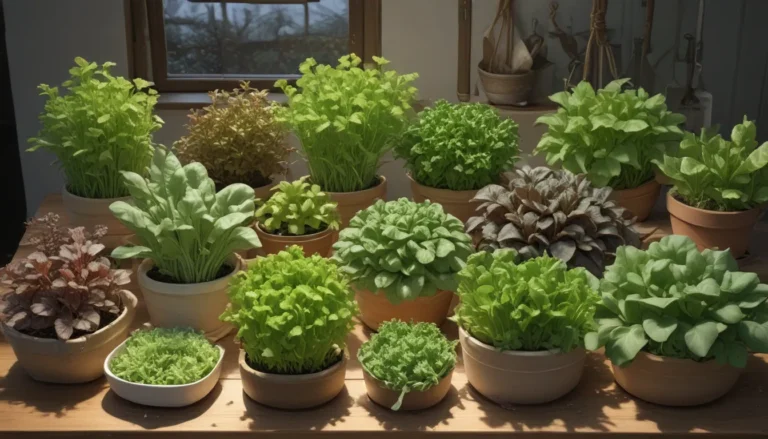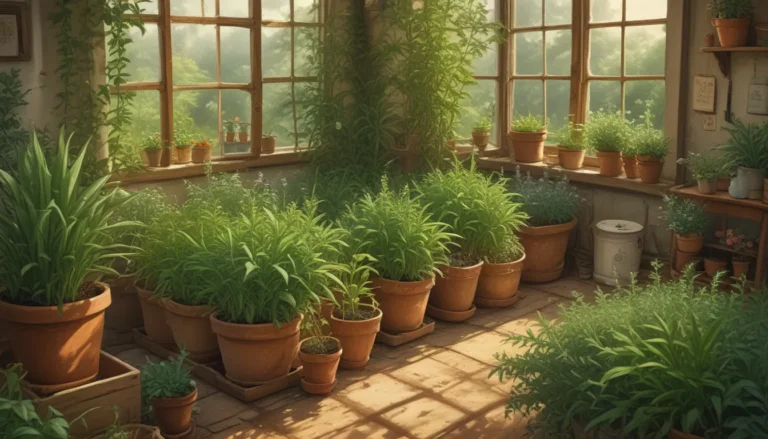How to Grow and Care for Pothos Houseplants – Your Complete Guide

Are you interested in adding some lush, greenery to your living space without the hassle of high-maintenance plants? Look no further than the pothos houseplant! Known for its easy care and attractive foliage, pothos, or Epipremnum aureum, is a beloved addition to homes and offices alike. This evergreen perennial vine is not only virtually indestructible but also adds a touch of elegance to any decor.
In this comprehensive guide, we will explore everything you need to know about growing and caring for pothos houseplants, from cultivation and history to propagation and maintenance. We will cover cultivation tips, popular cultivars to select, as well as how to manage pests and disease. Whether you are a seasoned plant enthusiast or a beginner looking to enhance your indoor greenery, this guide will equip you with the knowledge and tools to successfully grow and enjoy your pothos plants.
What Are Pothos Plants?
Pothos, also known as golden pothos or devil’s ivy, is a popular houseplant known for its lush, trailing vines and vibrant foliage. Native to Southeast Asia, pothos features variegated leaves in shades of green, cream, and yellow, making it a visually appealing addition to any indoor space. With its tolerance for low-light conditions and easy propagation from cuttings, pothos has become a favorite among plant enthusiasts and novices alike.
These versatile houseplants can be grown in hanging baskets, freestanding planters, or trained up trellises, making them suitable for a variety of indoor settings. While they may resemble philodendrons at first glance, pothos plants have distinct characteristics, including pointy-tipped leaves with simple curves and thicker, waxy foliage. With their ability to thrive in a range of environments, pothos houseplants are an excellent choice for those looking to add a touch of greenery to their homes with minimal effort.
A Note of Caution:
- Pothos plants are mildly toxic to humans and pets if ingested. Keep them out of reach of children and animals.
- If ingested, contact the Poison Control Center immediately for guidance.
Cultivation and History
Originating from tropical rainforests in Southeast Asia, pothos has a rich history that dates back to the Solomon Islands. While its exact origins remain a subject of debate, pothos has made its way to various tropical regions, including Australia, Hawaii, and Vietnam. Over the years, botanists have reclassified pothos multiple times, leading to its current classification as Epipremnum aureum.
The tropical climate of its native habitats has allowed pothos to thrive in the wild, reaching impressive heights of up to 65 feet and producing large, lush leaves. In contrast, indoor-grown pothos remains in a juvenile state, with smaller leaves and a more compact growth habit. Despite its indoor limitations, pothos houseplants offer a low-maintenance, decorative option for homes and offices, adding a touch of greenery without the need for extensive care.
Propagation
When it comes to propagating pothos, stem cuttings are the way to go. By snipping healthy stems from an established vine and rooting them in moist potting soil or water, you can easily create new plants. Pothos cuttings require little maintenance and will quickly develop roots, turning into small plants in a matter of weeks. Whether rooted in soil or water, pothos cuttings can be transplanted into pots and grown into mature plants with minimal effort.
Propagation Tips:
- Snip healthy stems with at least four leaves and one node for successful propagation.
- Root cuttings in well-draining potting soil or water for optimal growth.
- Plant the cuttings in a suitable container with indirect light for best results.
How to Grow
To ensure your pothos plants thrive, it is essential to provide them with the right growing conditions. Pothos prefer bright, indirect light and well-draining soil to prevent overwatering. When watering, allow the soil to dry out between waterings to avoid root rot and maintain healthy growth. Additionally, pothos benefit from moderate temperatures and regular fertilization during the growing season to encourage lush, vibrant foliage.
Growing Tips:
- Provide bright, indirect light for optimal growth.
- Allow the soil to dry out between waterings to prevent root rot.
- Plant pothos in well-draining soil and avoid overwatering.
Pruning and Maintenance
As pothos plants grow, they may require occasional pruning to maintain an attractive appearance and encourage fuller growth. By trimming the trailing vines or cutting back overgrown plants, you can help your pothos thrive and prevent leggy growth. In addition to pruning, regular maintenance tasks such as fertilization and rotation can help keep your pothos healthy and vibrant throughout the year.
Pruning Tips:
- Trim trailing vines to maintain a manageable length.
- Use sharp, clean tools to prune back overgrown plants.
- Fertilize and rotate pothos plants for optimal growth and appearance.
Cultivars to Select
When choosing pothos cultivars, consider the variations in leaf color and variegation to find the perfect fit for your indoor space. Popular cultivars such as Marble Queen, Neon, and Pearls and Jade offer unique foliage patterns and colors that can enhance the visual appeal of your home or office. By selecting cultivars that suit your aesthetic preferences, you can create a personalized indoor oasis with vibrant, lush foliage.
Popular Pothos Cultivars:
- Marble Queen: Known for its large leaves and variegated moss green and creamy white coloring.
- Neon: Features elongated leaves in bright green-yellow chartreuse color.
- Pearls and Jade: A patented variety with small leaves and distinctive white, green, and silver-gray variegation.
Managing Pests and Disease
While pothos plants are relatively pest and disease-resistant, they may encounter common issues such as aphids, mealybugs, and spider mites. By practicing good hygiene and monitoring your plants regularly, you can prevent and address pest infestations before they become a serious problem. Additionally, diseases such as bacterial leaf spot and root rot can be managed through proper watering, fertilization, and sanitation practices to maintain a healthy environment for your pothos plants.
Pest and Disease Management:
- Monitor plants regularly for signs of pests and disease.
- Address pest infestations promptly with natural remedies or insecticidal soap.
- Maintain proper watering and fertilization practices to prevent disease outbreaks.
Best Uses
Pothos plants are versatile and can be used in a variety of settings to add beauty and greenery to your indoor space. Whether grown in hanging baskets, trellised up walls, or displayed in unique containers, pothos offers a low-maintenance option for enhancing your home decor. Consider underplanting larger floor plants with pothos vines or creating a dish garden with multiple plant varieties to create a lush, layered look in your living space.
Decorating Tips:
- Use pothos in hanging baskets, trellises, or containers for a decorative touch.
- Underplant larger plants with pothos for a lush, layered look.
- Create a dish garden with pothos and other plant varieties for a harmonious display.
In conclusion, pothos houseplants are an excellent choice for anyone looking to add easy-care greenery to their indoor environment. With their attractive foliage, simple propagation method, and minimal maintenance requirements, pothos plants offer a versatile and decorative option for homes and offices. By following the tips and techniques outlined in this guide, you can cultivate healthy, vibrant pothos plants that enhance your living space and bring joy and beauty to your surroundings.
Whether you are a seasoned plant enthusiast or a beginner looking to start your indoor garden, pothos plants are a great choice for anyone seeking a low-maintenance, decorative houseplant. With their lush foliage, easy propagation, and versatile growth habits, pothos plants offer endless possibilities for creating a green oasis in your home. By following the cultivation, care, and propagation guidelines outlined in this guide, you can successfully grow and enjoy beautiful pothos plants that add a touch of nature to your indoor space. So go ahead, pick up a pothos plant and start growing your indoor garden today!





